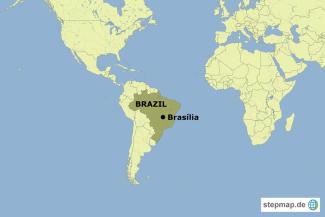Women’s safety
Fighting for justice

Despite her injuries, Maria da Penha fought for justice. In August 2006, Brazil’s legislature passed the so-called Maria da Penha Law. Its 46 articles create mechanisms to prevent and curb violence against women, in accordance with Brazil’s constitution.
Nonetheless, violence against women persists. Between 2015 and 2018, more than 483,000 cases of violence against women were registered in the state of Rio de Janeiro alone, according to the Instituto Igarapé, a think tank that focuses on emerging security and development issues.
The institute’s data show that violence against women often leads to murder. About 17,000 women in Brazil were killed during the three-year period under study. Moreover, Brazil, Mexico and Colombia account for 65 % of all murders in Latin America. Brazil had the largest number of female murders in Latin America in 2018.
The wave of violence cuts across racial lines. Of the acts of violence recorded between 2015 and 2018 in Rio de Janeiro state, 51 % were perpetrated against black and brown women and 47 % against white women, the institute says. These proportions correspond roughly to the racial breakdown of the state’s population.
Nonetheless, some experts contend that black and brown women are disproportionately affected by violence because racism makes them economically vulnerable and therefore less able to leave partners who threaten them. ‘’Black and peripheral women suffer more violence, first because of their economic vulnerability,” says Marisa Cesar, CEO of the Women of Brazil Group (Grupo Mulheres do Brasil), a women’s-rights organisation with 46 locations and over 36,000 members.
Other experts note that family violence can be found in all income classes in Brazil. Violence against women has deep roots in the country’s culture, explains lawyer Gabriele Gonçalves of the Rio de Janeiro section of the Ordem dos Advogados do Brasil (Brazil Bar Association). During 2018 and 2019, Gonçalves participated in an outreach effort to help victims of domestic violence in Armação dos Búzios, a coastal town about 175 kilometres east of Rio de Janeiro.
“I could see that many of the participants were being abused by their partners in their own homes,” Gonçalves says. “I believe that violence against women is cultural and is motivated by a sense of ownership on the part of relatives, partners or former spouses.”
Most victims of domestic violence have weak family-support structures and little information about their rights. Many feel they need their partners for protection, even if the same partners occasionally attack them. Women often fail to report such attacks for fear of retribution.
These cultural barriers are difficult to overcome. Many Brazilians believe that men are naturally superior to women, and that, in extreme cases, violence is an acceptable way to resolve conflicts. This view minimises the accountability of perpetrators, attributing their actions to biological imperatives. In many cases the attitude goes further and blames the victim.
With such views in place, it is no wonder that violence against women in Brazil is so widespread.
Thuany Rodrigues is a journalist in Brazil.
thuanyrodriigues@gmail.com








